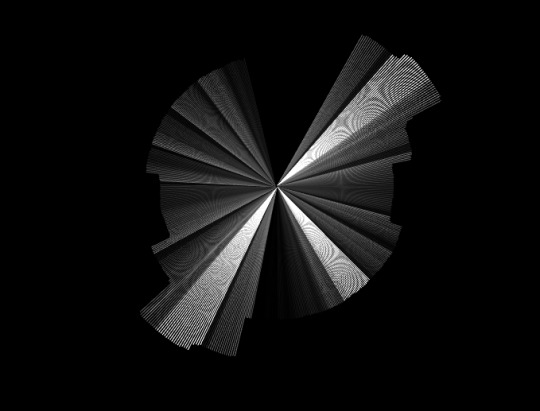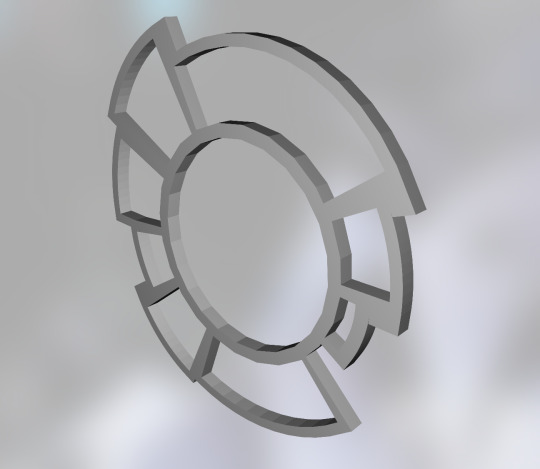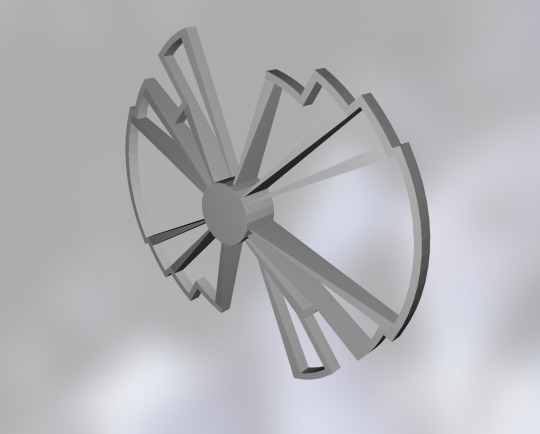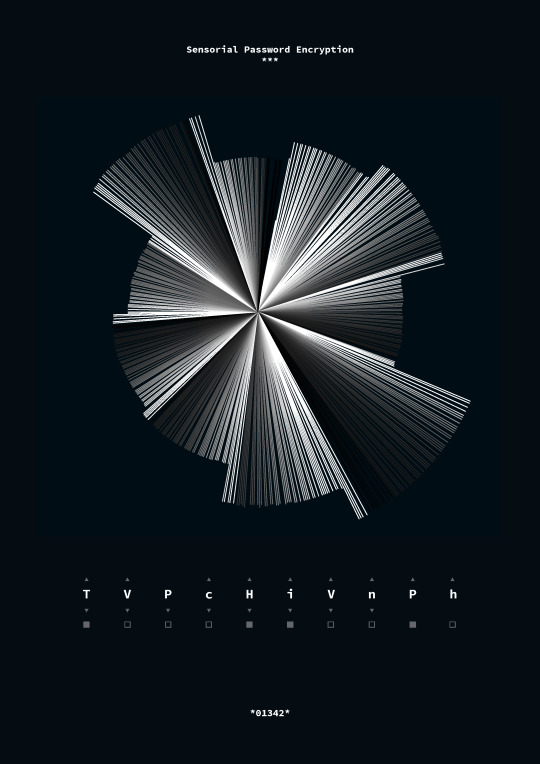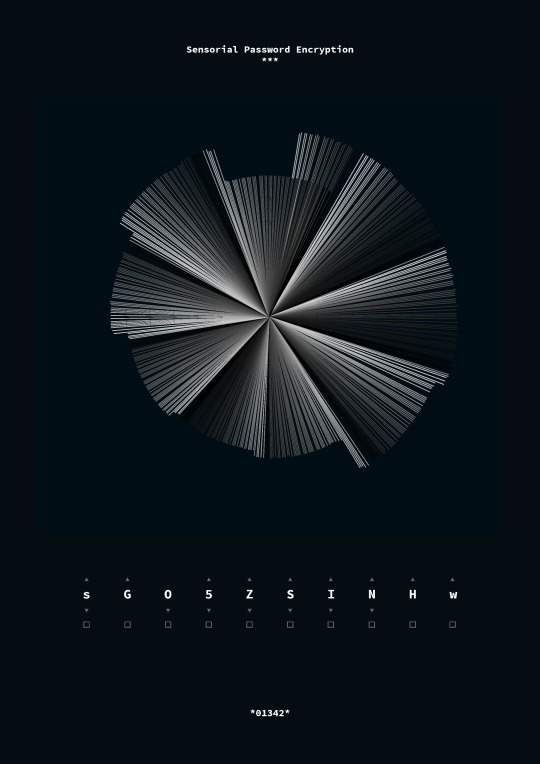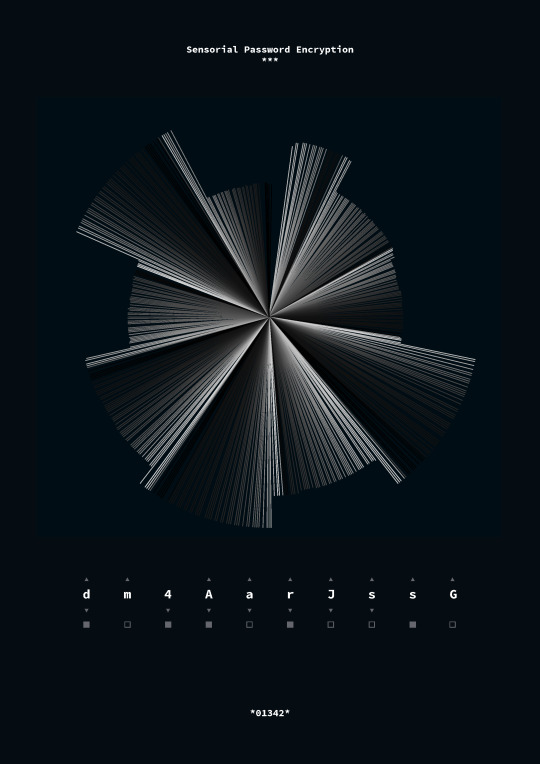Don't wanna be here? Send us removal request.
Text
Sensorial Encryption Passwords
Nowadays the digital realm plays an important role in our everyday life and our dependence on it is still growing. All our valuable, personal information and possessions are stored online and protected by passwords; they are our digital 'door lock'. For maximum safety, the strength of a password depends on its randomness. The less human logic is involved the better. Unfortunately, this absence of logic makes it almost impossible for people to remember. Convenience and full security seem to be impossible to combine. Programs such as '1Password' have tried to solve this problem by saving all your passwords in one place. However, this storage is once again protected by a password. The dilemma of improving the memorability of a password while simultaneously sustaining its strength remains.
People have been dealing with the problem of remembering and passing on complex information for thousands of years and tried to come up with solutions to make this process easier. Aboriginals already used the concept of songlines to navigate through landscapes and minstrels as well as Indians used song to pass on history. Combining text with sound optimizes our capability to remember; a technique we have forgotten about in our digital era but which could still be useful now. This form of 'sensorial programming of the human mind' relies on using the range of our human senses to remember complicated data.
In the project 'Sensorial Password Encryption' our sense of hearing and touch are used to trigger the remembrance of your password. A randomly generated password – a mix of capitals, lowercase, numbers and signs – is linked to a random melody of eight tones, which can be adjusted to personal preferences. By repetitively reading and listening simultaneously, eventually the melody and the password will become linked. From then on, hearing this melody will help as a trigger to remember your password. As it is not always possible to listen to your melody, it is translated into an object via a visual, musical notation: your physical password for life. This object offers a way to 'read' the melody by using your sense of touch.
0 notes
Link
“Part of the project Urban Songlines, taking the tradition of the Songlines, a system for navigation and care-taking of their land among Aboriginal Australians, translated to mapping urban space by creating music from its topography, discussing how we use and experience the public domain and to what degree we can claim ownership over it.”
0 notes
Text
Sensorial Encryption
WHY
Nowadays the digital realm plays an important role in everyday life and our dependance on it is still growing. All our online valuable, personal information and possessions are protected by passwords; they are our digital door lock. The strength of a password depends on its randomness. The less human logic is involved in the creation of it, the better. It is that much stronger and much more difficult to guess or hack. Unfortunately, this absence of logic makes it almost impossible for people to remember their password. Convenience and full security seem impossible to combine. How could the memorability of a password be improved while simultaneously becoming more complex and harder to hack?
HOW
Experiments have shown that our human linguistic memory is not as strong as our musical memory. A random phrase or selection of letters is difficult for us to remember. Melodies on the other hand are already easier, but the combination of text to sound is the most optimal for remembrance. If a melody could be combined to a random selection of letters, it would make a password easier to remember. It would also add another factor of randomness to the password: pitch; creating a bigger total of unique combinations and making it more difficult to hack. A storage of the password online as a reminder makes it more vulnerable. That’s why the ‘melody’ will be visualized as an abstract image and translated into a physical object. This way it is possible to keep a reminder for the password without having to store it digitally.
WHAT
The installation of the ‘Sensorial Encryption’ will consist of a digital tool to create a secure ‘pitch password’ and its visualization. Apart from that a projection will be part of the set, showing several visualized passwords together with the sound. Lastly, some physical versions will be displayed together with posters for people to take home.
0 notes


